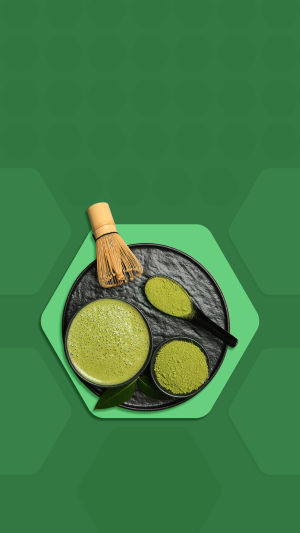Are you a matcha lover? Did you know that green tea is different from matcha? The answer is that the raw materials of matcha powder and green tea powder are both "green tea", but the manufacturing process is slightly different.
How is matcha different from regular green tea? What should you pay attention to when buying matcha? The following questions answer your most common matcha questions.
Q1: Matcha is just ground green tea into powder?
A: The tea leaves for making matcha are specially selected. Only spring tea is used, which has better aroma and less bitterness. The professor who specializes in tea research further explained that the tea leaves used to make matcha are also covered for a period of time before picking to reduce sun exposure and make it difficult for bitter substances to be produced. Therefore, the tea leaves made of matcha are slightly sweeter than ordinary green tea.
In terms of production methods, matcha, like green tea, is made from tea leaves that are picked and then steamed. However, matcha is not rolled after steaming, but the tea leaves are dried and the veins are removed, leaving only the part of the leaves. Crush into powder.
Q2: I heard that matcha is more nutritious than green tea, is it true?
A: This is true. Matcha powder is ground from whole tea leaves, and it is more complete in terms of nutritional intake than other types of tea leaves.
The nutritionist of the Nutrition Therapy Department pointed out that if compared with the same Japanese tea, each 100 grams of matcha has 29.6 grams of protein, which is higher than the 24.5 grams of sencha. Matcha contains 420 mg of calcium, which is higher than Gyokuro's 390 mg.
In terms of iron, matcha has 17 mg per 100 grams, which is also more than 10 grams of Gyokuro.
Furthermore, compared to the tea soup that only drinks tea leaves, the characteristic of matcha is that it can obtain the complete nutrition of tea leaves.
Xu Weiting said that fat-soluble vitamins A, D, E, and K can be fully released in matcha; in addition, antioxidants such as catechins and tea polyphenols are brewed with whole tea leaves, and their content will be higher than that of whole tea leaves.
How to make a good bowl of matcha? Buying matcha powder and going home is not as simple as brewing hot water in a tea bowl. Matcha art has its own set of brewing methods. If you do it correctly, you can DIY it yourself, and you can also drink the good taste of authentic matcha!
The hot water for brewing tea is between 80 and 90 degrees. After pouring in the hot water, first brush the tea with a tool made of bamboo.





